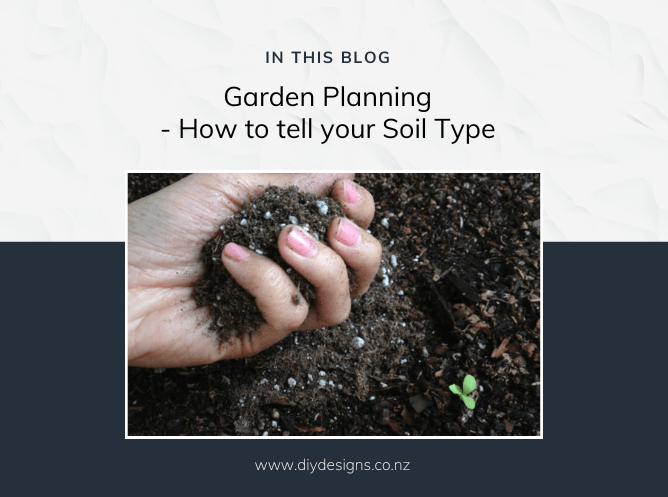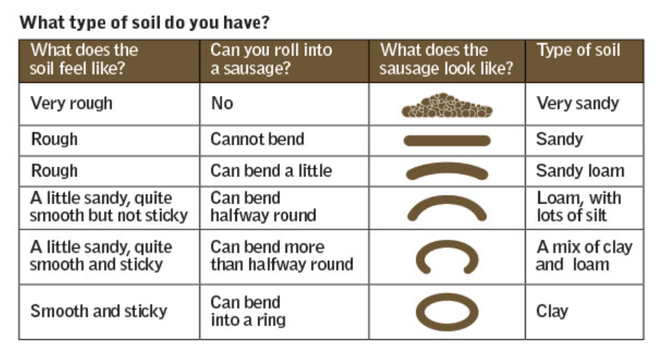GARDEN PLANNING - UNDERSTANDING YOUR SOIL TYPE
Garden planning includes understanding your soil type. Here’s how to tell what type of garden soil you have. It’s quick, easy and best of all, free!
MAKE A SOIL SAUSAGE
Just scoop up a handful of soil, add a little water and mould it into a sausage shape. Now bend it a bit more. If it falls apart in your hand, your soil is sandy; if you can keep bending it until it forms a circle, you have clay soil. If you can easily bend it into a sausage but it doesn’t stretch to form a circle, lucky you, you have fertile soil.
Fertile, sandy and clay soils are three of the basic soil categories.
GARDEN PLANNING : UNDERSTANDING FERTILE GARDEN SOIL
FERTILE GARDEN SOIL
Fertile soils are a gardener’s delight. They contain the major nutrients needed for basic plant nutrition (nitrogen, phosphorus, and potassium. Often including some form of organic matter, fertile soils have particles that strike a happy size medium between those of clay and sandy soils and so are free draining. Fertile soils can be volcanic or silt. Loam is another type of fertile garden soil - this is a mixture of various soil types. Your garden planning will uncover lots of references to plants that prefer free draining, fertile soil, so there is a vast array of garden plants for you to choose from.
GARDEN PLANNING - UNDERSTANDING SANDY GARDEN SOIL
Sandy soils are very fine, because they are comprised of large particles surrounded by air. This means the water drains away quickly. This is great for establishing lawns you can walk on in winter, however in garden and planted situations this makes it hard for plants to take up essential moisture as it washes away too quickly, often taking precious nutrients with it. On the plus side, it’s light and easy to work with and your plants won’t suffer from root rot. As moisture evaporates from the surface of the soil at a much faster rate than fertile or clay soils, garden planning should include research into mulching, arid gardening and drought tolerant plants.
GARDEN PLANNING - UNDERSTANDING CLAY GARDEN SOIL
Clay soils are dense, made up of many fine particles. This makes it hard for water to pass through the soil. Instead it absorbs it and the fine particles stick together which is why after heavy periods of rains and during winter your lawns and gardens squelchy and boggy. Conversely, in dry periods any moisture in the soil evaporates and the soil cracks as the clay shrinks. On the plus side, clay soils are rich in nutrients. These can be unlocked by soil modification, or you can choose plants that thrive in clay soil. Garden planning should include research into modifying clay soil or plants that thrive in clay soil.
Understanding your soil type is the first step to successful planting. Garden planning is much easier with professional garden design help. We can help.
Auckland landscape design company DIY Designs is located in Titirangi, West Auckland and work online providing a range of affordable fixed-price landscape and planting plans to help get your garden transformation underway.


